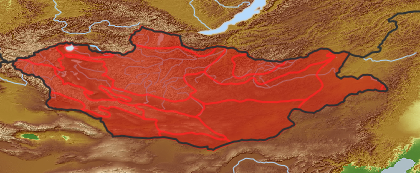| Class: | angiosperms |
| Order: | Solanales |
| Family: | Solanaceae |
| Name acc. to: | APGII |
| Herbar: | list records   |
| Description: | Annual or perennial herbs or thorny semishrubs. Leaves simple or pinnatilobate. Flowers with distinct tube and limb, in racemes, fascicles or cymes. Fruit a berry or capsule dehiscing by transverse fissure. |
| Link to Flora of China: | http://www.efloras.org/florataxon.aspx?flora_id=2&taxon_id=10828 |
| open map in a new window |  |
| genus: 4 |
| species: 9 |
| Habit (i)general appearance of a plant | |
| Parasite status: (i)Is the plant a half- or full parasite? | no parasite/saprophyte (i)Plant fully autonomous, leaves with chlorophyll
example: Most plants, Ranunculus
|
| Water or terrestrial plant: (i)Where do the plants grow? | terrestrial (i)Plant grows on dry land
example: Orostachys spinosa
|
| Leaf (i)expanded, usually photosynthetic organ of a plant (including phylloclades) | |
| Leaf development: (i)Structure and development of leaves. | with green leaves (i)Plant with green leaves
|
| Leaf arrangement: (i)Arrangement of leaves at the stem. | alternate (i)One leaf per node; distiche: arranged in two vertical rows, equitant
example: Phragmites  
|
| Leaf veination: (i)Arrangement of the main veins of a leaf. | pinnate (i)One main vein, several side veins, sometimes inconspicuous
example: Cicerbita   
|
| Flower (i)reproductive portion of the plant, consisting of sepals, petals, stamens, and pistils | |
| Flower appearance and pollination: (i)General appearance of the flower. | attractive, animal-pollinated (i)attractive and coloured flowers, mostly large, attracting surely animals
example: Trollius, Rosa, Chamaerhodos
|
| Perianth arrangement: (i)Attention: in some plants, flowers may be dimorphic in different ways (dioecious or gynodioecious). If flowers vary, record the characters of the most showy flowers. | double, different (i)Two types of perianth leaves, differently coloured (sepals: outer periant leaves, usually greenish, and petals: inner perianth leaves, usually coloured)
example: Parnassia  
|
| Flower symmetry: (i)Symmetry of the perianth leaves. Attention: to assess this character, look on sepals, petals and stamens, but neglect carpels and ovary. | radiary, regular (actinomorphic) (i)More than two axis of symmetry
example: Saxifraga: 5; Iris: 3 
|
| Flower form: (i)common forms of flowers ? Veronica | simple (flat) - Do not confuse with inflorescences as in some Asteraceae (i)Petals spread out, flower appearing flat
example: Mollugo, Trientalis, Pulsatilla, Saxifraga 
campanulate (i)Petals united to a bell-shaped corolla 
|
| Sepal number: (i)Number of sepal leaves (outer perianth leaves, calyx leaves, mostly greenish). Attention, this character applies only for flowers separated in sepals and petals, thus excluding most monocots. Be aware of the bracts (involucral leaves) of Asteraceae flowerheads, do not qualify these as sepals! Be also aware in Rosaceae is often an epicalyx developed, in this case count all parts. | 5 (i)
example: Polemonium
|
| Sepal fusion: (i)To which degree are the sepal leaves connected? Attention, this character applies only for flowers separated in sepals and petals, thus excluding most monocots. Be aware of the bracts (involucral leaves) of Asteraceae flowerheads, do not qualify these as sepals! | fused (i)Leaves united, only tips are free
example: Fabaceae, Silene  
|
| Petal / Tepal number: (i)Number of petal leaves (inner perianth leaves, usually coloured). | 5 (i)
example: Potentilla
|
| Petal / Tepal fusion: (i)To which degree are the petal leaves connected? Petals sympetalous. | fused (i)petal leaves united, only tips are free (gamopetalous, sympetalous)
example: Linnaea, Adenophora, Stellera
|
| Spur: (i)A hollow, slender, sac-like appendage of the perianth leaves, storing nectar. | no spur (i)Flower without appendage
example: Peganum
|
| Stamen number: (i)Attention: We ask for the reproductive organs of the flower dispersing pollen. Count only fully fertile stamens, not staminodia (e.g. Parnassia). | 5 (i)
example: Peucedanum
|
| Stamen fusion: (i)To which degree are the stamens fused? Attention: Whereas the pollen sacs itself are often free., their stalks (filaments) may be fused. Here, we count them as fused if they are together over at least one thirth of their length. | free (i)Stamens with separate bases
example: Malus
|
| Pistil number: (i)Number of pistils (female floral organs: style, if developed; stigma and carpels/ovary together build the pistil). | 1 (i)One carpel, but clearly one stigma
example: Pyrola, Primula, Alyssum
|
| Carpel number: (i)Number of carpels (carpel: forming a simple pistil or part of a compound pistil, modified leaf). | 2
|
| Carpel fusion: (i)To which degree are the carpels (modified leaf forming simple pistil or part of a compound pistil) fused. | fused (i)Carpels united into an ovary, only styles are free
example: Malus, Berberis
|
| Style number: (i)Portion of the pistil connecting the stigma to the ovary. | 1
|
| Stigma number per style: (i)Number of stigmas per style. | 1 (i)One stigma, sessile or with a developed style
|
| Ovary position: (i)For entirely or partly fused carpels, describe their position in relation to the insertion point of perianth leaves (best done by doing a longitudinal section of a flower). | superior (hypogynous) (i)Base of carpels attached above insertion point of perianth leaves, carpels free or fused
example: Delphinium, Anemone  
|
| Sex: (i)Distribution of male and female organs among flowers, only most commonly cases. | bisexual, hermaphrodite (i)All or nearly all flowers of a plant with male and female parts
example: Haplophyllum, Chenopodium
|
| Root / shoot below ground (i)plant part below ground (in most cases), including below ground shoots, without leaves | |
| Root type: (i)Organisation of the roots. | allorhizous (i)Plant with a conspicuous tap root, one larger tap root with side roots
example: Dicotyledonae  inherited by order Solanales: allorhizous inherited by order Solanales: allorhizous
|